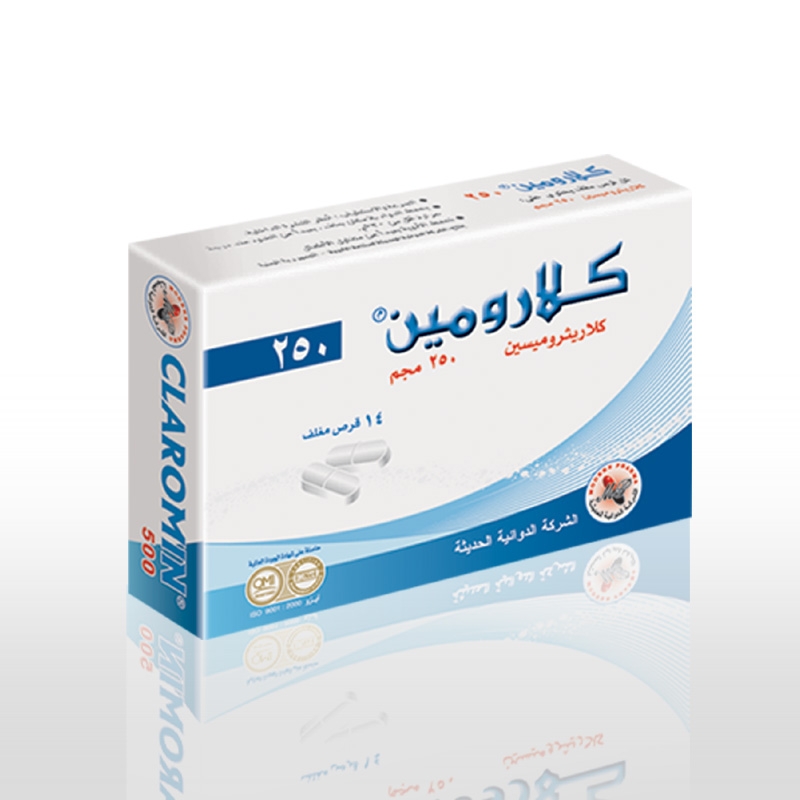Claromin 250
- Clarithromycin is a semi-synthetic macrolide antibiotic with a
broad spectrum activity. It is rapidly absorbed from the
gastrointestinal tract, The extent of absorption is relatively
unaffected by the presence of food , and it undergoes first-pass
metabolism; the absolute bioaviability is about55 %.
- Clarithromycin is more active than Erythromycin against
susceptible Streptococci and Staphylococci in vitro, as well as
against some other species including Moraxella catarrhalis,
legionella spp., Chlamydia pneumoniae and Ureaplasma
urealyticum.
- Clarithromycin is more active than Erythromycin or Azithromycin
against some Mycobacteria, incluling Mycobacterium avium
complex , and against M. Leprae. It is reported to have some in
vitro activity against Toxoplasma gondii and may have activity
against cryptosporidia.
- Clarithromycin activity may be enhanced by its major metabolite, 14-hydroxy clarithromycin, which have anti microbial against Haemophilus influenzae.
- Clarithromycin peak plasma concentrations are attained within 2
hours after oral dosing, and 80% is bound to plasma proteins at
therapeutic levels. It is widely distributed, and tissue concentrations
exceed those in serum. It has been detected in breast milk.
- Clarithromycin is extensively metabolised in liver and excreted in
faeces via the bile. At steady state about 20% and 30% of 250 mg
or 500 mg dose as tablets, respectively, is excreted in the urine as
unchanged drug.
- The terminal half-life of Clarithromycin is reportedly about 3- 4
hours in patients receiving 250 mg dose twice daily, and about 5 to
7 hours in those receiving 500 mg twice daily and the half-life is
prolonged in renal impairment.


